








-
 . View a larger version of this image.
. View a larger version of this image. -
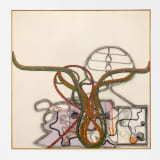 . View a larger version of this image.
. View a larger version of this image. -
 . View a larger version of this image.
. View a larger version of this image. -
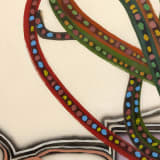 . View a larger version of this image.
. View a larger version of this image. -
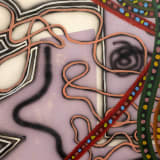 . View a larger version of this image.
. View a larger version of this image. -
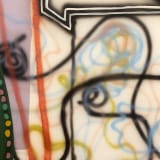 . View a larger version of this image.
. View a larger version of this image. -
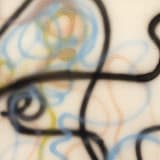 . View a larger version of this image.
. View a larger version of this image. -
 . View a larger version of this image.
. View a larger version of this image. -
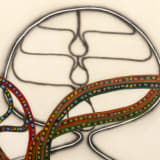 . View a larger version of this image.
. View a larger version of this image.
Bernard Cohen Amaranth, 1964
Bernard Cohen was educated in the post-war climate of change and cultural upheaval. This period, charged with the reverie of reconstruction, the ambiguity of lost identity and the playfulness of flux, would come to inform his work for the remainder of the century. On graduating from the Slade in 1954, Cohen travelled to Paris, Madrid and Rome before arriving at the cusp of a new era in painting. The 1960s, for Cohen, “followed the 40s and 50s as years of light following years of darkness.”
The metaphor of light is central to Cohen’s understanding of his practice over this period: “during the 60s,” he reveals, “I became consciously concerned with clarity and obscurity in painting, and what I call almost order and almost chaos." The artist’s exploration of the borderland between order and chaos is evident in works that revel in fragmentation as decoration, and shun a definitive subject or genre.
Selected public exhibitions include a 1972 retrospective at the Hayward Gallery, London; Artist in Focus, Six Paintings from the Tate Gallery Collection, Tate, 1995; Stroll on! Aspects of British Abstract Art in the Sixties, Mamco, Musée d’Art Moderne et Contemporain, Geneva, 2006; Abstraction and the Human Figure at CAM’s British Art Collection, Calouste Gulbenkian Foundation, Lisbon in 2010, and a 2017 Spotlight exhibition at Tate Britain.
60 x 60 in
-
 . View a larger version of this image.
. View a larger version of this image. -
 . View a larger version of this image.
. View a larger version of this image. -
 . View a larger version of this image.
. View a larger version of this image. -
 . View a larger version of this image.
. View a larger version of this image. -
 . View a larger version of this image.
. View a larger version of this image. -
 . View a larger version of this image.
. View a larger version of this image. -
 . View a larger version of this image.
. View a larger version of this image. -
 . View a larger version of this image.
. View a larger version of this image. -
 . View a larger version of this image.
. View a larger version of this image.